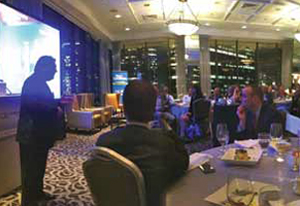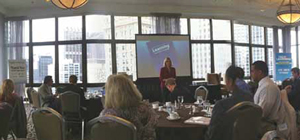SchoolCIO Leadership Summit: Looking Towards 2014

Reporting by Henry Thiele, Ellen Ullman, Judy Salpeter, Kevin Hogan, and Christine Weiser
Dr. Manuel Isquierdo, Superintendent of Sunnyside Unified School District in Tucson, AZ, shares his district’s success story with summit attendees.
Karen Cator, Director, Office of Educational Technology, U.S. Department of Education, offered a top 10 edtech tips presentation in the morning keynote address.
The next two years promise to bring significant changes to the role technology plays in classrooms and schools. With the growing popularity of BYO and 1:1 implementations, the evolution from print textbooks to digital content, and the adoption of Common Core State Standards supported by online assessments, there are a number of pressing issues on the minds of K-12 technology leaders and administrators as they look ahead to the year 2014.

This was the filter through which many of the discussions took place at this fall’s SchoolCIO Technology Summit, which brought together superintendents, CIOs and other district leaders from all over the country for two days of networking and problem solving. In the pages that follow, you will read reports from five working groups that met to focus on:
* Digital Content and Learning Management;
* Infrastructure, Bandwidth and Access;
* Professional Development;
* Budgeting and Community Support; and
* Equipping the 21st Century Classroom.
General sessions complemented the smaller working groups. The opening session focused on public school systems in three major urban areas—Chicago, Boston and Tucson—with a look at their efforts to narrow the digital divide, engage students, and inspire them to stay in school for an education that truly prepares them for a successful future. Friday morning’s keynote address was delivered by Karen Cator of the U.S. Department of Education, who talked about national priorities and initiatives ranging from increasing broadband access to tapping into procurement trends such as crowd-sourced ratings and aggregated purchasing to deliver better access to affordable and high-quality content. Presentations from the two general sessions can be found in the online “presentation vault” at: www.schoolcio.com/ciosummits
A special thanks to our sponsors—Aerohive, HP, Intel, Lightspeed Systems, Panasonic, and School Messenger—as well as all the inspiring district leaders who came together to share their wisdom and experience with us and, in turn, with the r eaders of this publication.
Tools and ideas to transform education. Sign up below.
